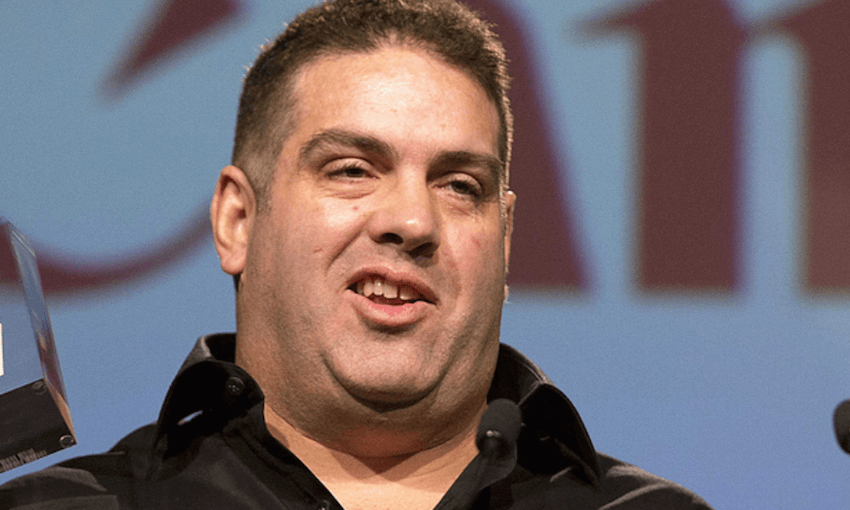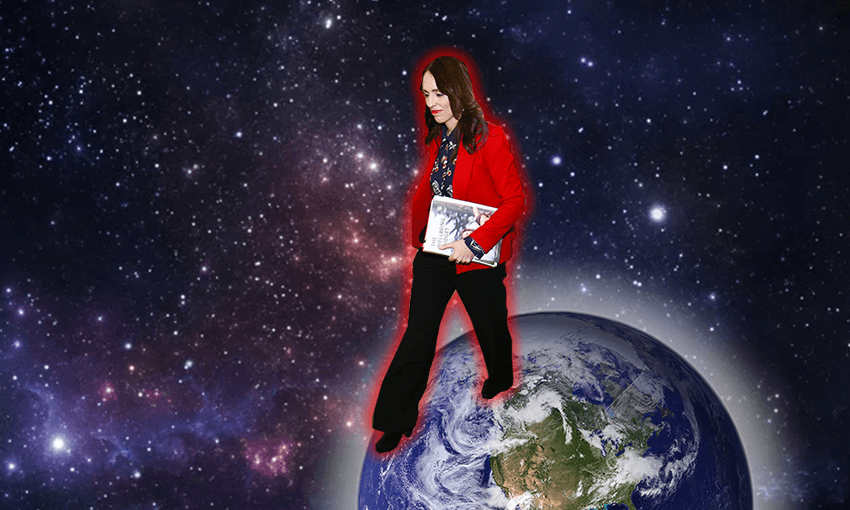Bringing you the best weekly reading from your friendly local website.
Sam Brooks: The 10 most shocking moments in the blistering new book ‘Whale Oil’
Slater tried to add Blomfield’s 10-year-old daughter on Snapchat
Well after the armed attack, and a fair way into the protracted legal battle between the pair, Slater, or someone pretending to be Slater, tried to add Blomfield’s 10-year-old daughter on Snapchat.
Slater, meanwhile, had been attempting a different kind of access into Matt’s realm. Early March 2017 and Rosalie, Matt’s now 10-year-old daughter, taps on the Snapchat icon on her phone. Someone called Cam Slater from whaleoilnz is asking to follow her. She looks at that name. It seems familiar. She takes her phone to Matt. ‘Dad,’ she says, ‘isn’t this the man who said mean things about you?’
Slater allegedly has a soft handshake, and eats steak
For reasons I can’t fathom, but I’m sure are explicable to the men at the centre of this saga, Cameron Slater and Matt Blomfield have lunch together to try and hash things out. At the Winebox Cafe, of all places! In the book, Blomfield admits that it was ‘an attempt to re-establish that power balance’. Blomfield had a chicken burger, Slater had Scotch fillet.
But, also, Blomfield notes Slater’s handshake:
Matt paid for Slater’s lunch; noted his soft handshake. ‘The whole thing was therapeutic from my point of view,’ he says. ‘I thought, you’re just a guy with a website.’
David Farrier: The mysterious Instagram influencers offering cash for hotel bed jumping videos
“Hotel Bed Jumping is a strange world. Unverifiable names, supposed competitions, and ultimately a desire to gather as much footage as possible of a sort-of-innocent-but-is-it-something-else activity.
There is no giant scandal to be found here. No-one is getting hurt. What we have is a really good example of how strange influencer culture has become.
I mean, you have a bunch of influencers that jump at the phrase “free hotel room” and “charity”. Then you have hotel chains happy to give away rooms to a “Travel Agency” that appears to be nothing more than an Instagram account with 26,000 followers.
Hypothetically, if I was someone who wanted footage of women jumping on beds, I’d probably do exactly what TPT Marketing has done. And suddenly I’d be getting free hotel rooms to offer to ‘influencers’, in exchange for them filming themselves and sending me the footage. And I’d be doing all this in plain sight because the social media influencer scene is so cooked. No one would even blink an eye.
I checked my DMs again, and there were some new ones from @hotelbedjumping_community. They said they were aware I’d been making inquiries and were upset I’d voiced my suspicions to participants.”
Simon Connell: The fascinating case of Hannah Tamaki vs the Māori Women’s Welfare League
“In 2011, Hannah Tamaki was nominated for the presidency of the Māori Women’s Welfare League, the organisation famously lead by Dame Whina Cooper throughout the 1950s. It was the first national Māori organisation to be formed, and the first to provide Māori women with a forum in which their concerns could be aired, brought to a wider national audience and placed before the policy-makers of the day.
The National Executive Committee of the MWWL decided to exclude Tamaki from the presidential ballot and omitted to send the ballot to thirteen league branches that the committee regarded as associated with the Destiny Church, justifying its actions on the basis of protecting the league’s constitutional commitment to non-sectarianism.
Tamaki took the league to Court.
Was this a case of the ‘old guard’ improperly attempting to retain control of an organisation in the face of new membership or an underhanded attempt by the Destiny Church to stack the deck?”
Alex Casey: What is the best New Zealand jingle of all time?
“Jingles are the great unifier of our fair nation. A high level source confirmed that even the All Blacks sing jingles together because they are the only tunes that everyone knows apart from the national anthem. Jump onto any party bus at a certain hour of the night and you’ll be guaranteed to slay with a rousing rendition of ‘Tony’s Tyre Service’. Stuck in a quiet elevator? Mutter “cats prefer Chef” and see just how many soft meows you get back.
Over the past week or so, New Zealand jingles have taken over my life. I’ve thought about them more than I’ve ever thought about anything, I’ve talked about them with basically everyone I’ve come into contact with, I’ve gasped awake several times with CAROLINE EVE, YOU WEAR IT SOOOO WELLLLLLL tearing through my brain.
There’s also been a lot of fierce discussion in the office about what is and isn’t a jingle, with the utterance “that’s not a jingle, that’s a song sung by fleas as part of a skit” being made aloud by one anonymous Spinoff staffer. But which New Zealand jingle is the very best? Based on my research across social media, asking various celebrities and canvassing strangers on the street, here are my findings from worst to best.”
Emily Writes: How childbirth works, according to a man
“I was interested to hear pregnant people can plan when they go into labour. Can you explain that to me?
Of course sweetheart! So, the way it works is a baby is in the baby home for nine months. When you get to nine months, you go to the hospital and the baby comes out the baby hole.
Oh. I had my both of my babies at 37 weeks-
Darling listen, this is how babies work. They come out after nine months. They grow and grow and then they come out. You need to hold them in until then. You can cross your legs.
I feel like that’s not-
It’s science sugar tits. I have read the Wikipedia page on birth three times since this whole drama came out. The way it works is you put on the calendar the day that you’ll have had the baby in the baby home for nine months and then when it’s that time you go to the hospital the day before. Don’t go on the day of. That’s just asking for trouble isn’t it? If you go the day of, the baby might come early and you might be caught out. That’s hardly the fault of the DHB is it chicky?
But what about premature babies?
They don’t exist.”
Murray Brewer: The tax empathy gap: Why Kiwis don’t want others to have a share
“Kiwis see the likes of universal superannuation and free healthcare as their birthright. Yet these same New Zealanders are known to wring their hands in outrage over social good spending such as Treaty of Waitangi claims. The fiscal reality is that two months of this year’s superannuation payments would cover the last 20 years’ worth of Treaty settlements.
There is a name for this emotional response to money. Mental accounting is the theory that people think of value in relative rather than absolute terms.
Stick with me because it explains a lot, and the recent extreme reaction to the government’s plans for a capital gains tax (CGT) is a good example.”
Josie Adams: I survived the Waiheke ferry
A watery war zone has emerged in New Zealand’s biggest city, with Waiheke-Auckland ferry cutbacks leaving abandoned souls desperate for home and hungry for retribution. Josie Adams risks everything to experience the nation’s most hostile ferry journey.
Don Rowe: There are eleven more bodies on Everest
“Like a Monday night at the self-service, they’re stacked back-to-back-to-back in their puffy jackets, jostling in crampons, huffing on bootleg oxygen canisters and quite literally starving for oxygen as they crawl over actual dead bodies in a manic shitfight to reach the top of the world.
“Some people lose their sense of decency,” reports the New York Times.
The regulatory environment in Nepal is all but non-existent and the government refuses to stop issuing permits and so the mountain itself is open to the beautiful free market, which brings $20-30m a year and about 300 corpses to the region. Everest even has its own insurance scams.
There’s just one week in May where the weather means you might have a shot at the summit. The decision on who gets to go is made by storefront cowboy operators in Kathmandu. But the line is too long now and half the climbers shouldn’t be there anyway. When the oxygen runs out, sherpas are asked to hand over their own. Sherpas have been agitating for better treatment for 100 years straight.”





